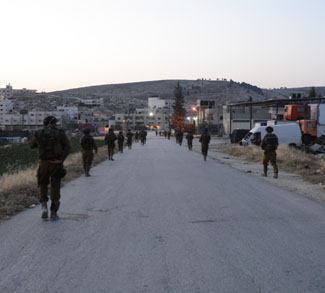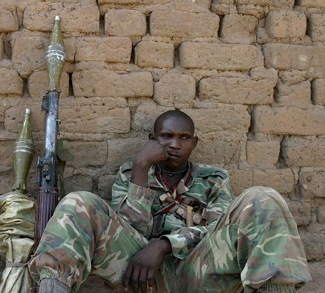Around 1096, the Pope issued a decree banning crossbows as murderous and un-Christian weapons. Although a later Pope clarified that it was still allowable to kill heathens with crossbows, all Christian nations were supposed to refrain from the use of such devices in warfare or suffer eternal damnation. Unsurprisingly, the Pope’s attempt at medieval arms control failed, and Swiss action hero William Tell became a legend. In 12th century Europe, the primary threat to security came from armored warriors, and a crossbow could penetrate the armor of the time. If one wanted to secure one’s castle from being stormed by armored enemies, a few crossbows on the walls would have been an effective deterrent.
Almost one thousand years later, we are still trying arms control by the equivalent of banning crossbows. The Ottawa Convention banned antipersonnel landmines, yet over a million of the things have been sown in Ukraine, with more planted each day. It will come as cold comfort to Syrian villagers or Russian dissidents that the Chemical Weapons Convention made asphyxiating gas and Novichok illegal. There have even been well-meaning attempts to ban nuclear weapons on humanitarian grounds, yet there remain over 12,000 of the world’s most destructive weapons in the hands of nine countries. Just as with the crossbow ban, these efforts at arms control have been ineffective because they do not address the insecurities that have driven the acquisition of murderous weapons. Undoubtedly, there were some medieval Europeans who heeded the Pope and eschewed their crossbows, gaining the knowledge that their place in heaven was secure, but they were likely not those living in castles threatened by well-armed enemies. Similarly, of the dozens of nations which have achieved the diplomatic equivalent of paradise by agreeing to ban nuclear weapons, none are among those that felt compelled to acquire this dangerous technology in the first place.
This is a question of ends and means. If the ultimate goal of those who try to ban weapons, be they crossbows or nuclear devices, is simply to exclude the use of such devices, it misses the point. Rather, the goal of any arms control effort should be to make the world safer. While it is certain that the world would be safer without nuclear weapons, disarmament is but one means to the end of a peaceful world – and not the only one. This is not to say that a nuclear ban treaty is a bad idea, but it could be counter-productive if it becomes the goal and not one element of a broader process. If nuclear weapons disappeared overnight, would all the causes of conflict go with them? Instead, the frictions and rivalries at the root of international conflicts would remain – the conditions that led some states to acquire nuclear weapons in the first place. Banning crossbows doesn’t work in an insecure environment.
What does work? Arms control that takes into account the national interests of the nations involved and arrives at an arrangement by which all involved believe they are more secure as a result. As an example, consider the Intermediate Range Nuclear Forces (INF) Treaty of 1987. This agreement eliminated an entire class of nuclear weapons in a verifiable way and was reached after over seven years of painstaking negotiation. Intermediate range weapons were inherently destabilizing. Their relatively short flight time and destructive power raised concerns that they were intended to be used in the first strike of a nuclear war, making such a calamity more likely. Fortunately, the leaderships of the U.S. and Soviet Union realized this and eventually were able to find common ground in that both nuclear powers would feel more secure in the absence of INF-class weapons. The Treaty was the result and ameliorated one of the most dangerous situations of the Cold War.
Despite the ban, crossbows remained a feature of medieval warfare, and armies learned how to use them and counter them. Does this mean that the 21st century world should simply learn to live with nuclear weapons? Not necessarily. There are two critical distinctions. First is the destructiveness of nuclear weapons. They are not just murderous; they are devastating. Any use would result in mass casualties and widespread destruction with the possibility of long-term consequences. It is in the interest of all governments to minimize any possibility of nuclear war, making a strategy to reduce such weapons a necessity. The second key difference would be nuclear weapons’ lack of utility as weapons of war. Since 1945, there have been thousands of such weapons built but not used despite persistent military conflicts. Over the past two years, Russia, the world’s largest nuclear power, has waged a war of aggression in Ukraine with limited success and no direct application of its nuclear forces. Instead, precision guided weapons, drones and old-fashioned ground troops have been the instruments of choice. Nuclear weapons’ main value is to deter nuclear attack, and to do this requires but few such weapons.
The challenge is to look for ways to limit a potential nuclear arms race, while looking at how and when reductions on nuclear forces will contribute to nuclear states’ security. To do so will require building a long-term strategy based on more than banning crossbows. Just as with the INF Treaty, governments will only reduce their numbers of nuclear weapons when they believe doing so will make them safer, a condition that will not be met when nuclear proliferation remains likely or when others can cheat on limits. Effective arms control, therefore, will need to do far more than declare weapons illegal; it must be based on careful diplomacy and effective verification. Banning weapons may be a path to heaven, but in the imperfect world we inhabit, the task is more complicated.
The views expressed in this article belong to the authors alone and do not necessarily reflect those of Geopoliticalmonitor.com.




